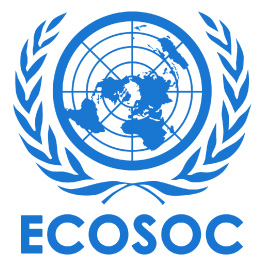"This program was a really good mix of volunteer work, cultural excursions, and "downtime". What I particularly liked about this program was the opportunity for meaningul interaction with individuals - we spent a whole day with the family for whom we installed a cement floor (and most of the neighbourhood dropped by to check it out at some point), which provided a unique opportunity for relaxed interaction. Anne's library program is amazing and the volunteers got the sense that we were really needed/appreciated in this role of practicing English with kids and adults. Spending time with local change-makers like Danny at the Harmony Reforestation Project and Dona Maria, the 74 year old midwife/herbalist was an honour and a great learning experience for us.
We appreciated the free time to relax given that much of the volunteer work was physical - building a cement floor, gardening etc. Gringo Perdido is a bit isolated and food is only available at set mealtimes; so my only suggestion would be to offer some snacks, even just a bowl of fruit, in between meals. Having said that, staff were very helpful in packing breakfast if we had to leave early (like 5 am for Tikal).
I've travelled a fair bit in Central America so there were not a lot of big surprises. Although I was a bit surprised at the large expat community in Flores/El Ramate - I was not expecting that. We met a fair number of retired Americans, Canadians and Europeans who were making their retirement savings go farther in a less developed country, but also volunteering and making a big difference in their community, which was inspiring. Also people still seem to have a perception of Guatemala as being dangerous: even welltravelled friends were concerned we were going there. Which is not the case at all, of course. We felt quite safe walking the streets and did a bit of exploring on our own, walking into El Ramate or taking the local chicken bus into Flores.
The material was helpful in terms of a sample schedule and knowing what to expect in general. Some things in there were not correct (ie you can't use hairdryers at the hotel). I REALLY wish we had been given accurate information about what items would be most needed in the community. We were told small rod dehumidifiers (not needed, no one had heard of them - luckily we did not take any) and eyeglasses (which we brought, but did not seem to be the most needed item). What was needed were medicines (Anne's shipment last year was held up at the border and has still not arrived), children's books in English and Spanish, soccer shoes & soccer balls. If we had known this, we could have brought thigs that were most appropriate & needed in the community. It would be very helpful for volunteers to be able to contact the co-ordinator directly prior to the program. With respect, it seems to me that the resistance to this is a proprietary issue for Globe Aware which is being allowed to interfere with opportunities to assist the host community effectively." - Martha Heder, February 2015
"We felt we made an impact to the people there in the right way. We contributed to the local economy and ensured people were working to earn the money from our program fees. I think it's much better than simply giving people money and donations. We also felt that our English lessons will help prepare people for more tourists coming to the area. The Peten region has great sights especially with Tikal so close by. But the previously unstable government has scared many tourist away. The area has a great infrastructure for tourism and the people are amazing. More people coming to the area would definitely do a great deal to improve the lives of everyone there.
The program was an excellent mix of work, cultural emersion and free time. The location of the accommodations was fantastic and beautiful. It was relaxing and very comfortable. The food was excellent and had some great variety too.
I was surprised by how much Spanish the kids could teach me while I was teaching them English. In that sense it was a very even exchange. I was also fascinated by the Harmony Station project and was quite impressed with what they are doing for reforestation and how they are educating people about the importance of it. The herb walk in the rain forest was also amazing, especially when we visited a family home and were given a really candid look at the lives of ordinary Guatemalans. The same was true for the floor building project. It was great to see the neighbourhood come out and observe the work as we were doing it. We met so many wonderful people and were very happy to make a contribution to their overall health and lives.
This program had an excellent mix of different and very interesting projects. Anne has done a great job there and should be commended for all the fantastic work she is doing there. She is engaging the members of the community and they are being given the opportunity to earn money in meaningful and positive ways. Certain donations are needed for the very poor to give them better health and education so we were happy to be able to do that. The cultural exchange was also fantastic. We learned a great deal about their society and how they live.
I'm a big fan of Globe Aware programs. I like to travel the world and see unique places and do things that normal tourists do not get to do. Part of why I enjoy doing these trips is altruistic, but it's also partly self serving in the sense that I get to see and do amazing things. Your motto of Have Fun, Help People really does sum it up for me. The good mix of cultural emersion, volunteering projects and interesting tourism are why I will continue to do Globe Aware projects." - Bob Appeldoorn, February 2015
"A good mix of work and free time. You can stay busy pretty much all day with the optional free time activities. I have spent quite a bit of time in places like this before, but it was really great for my wife and kids. They learned so much about the different culture that you don't get when just participating as a tourist. You guys did great and lots of thanks to Ann for having everything so organized and being flexible with everyone's plans, wants and desires."- Dane Ashworth, December 2014
Day 1
So the main reason we are here is to learn about and immerse ourselves in the community and culture of the people of El Remate, Guatemala, about 25 miles SW of the ancient ruins of Tikal. The needs of this community are great and much progress is being made, but it is still very much a 3rd world culture. It was not until 2000 that this part of the country had running water and was connected to the electrical grid. Until then, women were going to the river to bring water to their homes. There is only one paved road in the entire town which was funded by the last democratic government after many years of civil war and political unrest. Many buildings look abandoned and are in fact "in progress" and are completed in stages over multiple seasons, and sometimes years when enough money has been saved up by the owner of the land in this " hand to mouth" society. Most inhabitants of this region are transplants from other parts of Guatemala because so many indigenous people had been killed. The area is being repopulated and a new culture is forming and blending many traditions together from its people.
The empowerment of women in this community is a new concept and is slowly increasing due to the diligent project work headed up by our Globe Aware site coordinator, Canadian native, Anne Lossing. Over the last 20 years, her project has helped build a health clinic, children's secondary school equipped with computers, a children's art and learning center with a library and helped form the first women's group. The goal of this group is to bring members of the community together to help support each other emotionally, socially and financially. They have also created a place for sustainable agriculture by planting a garden and learning to grow indigenous foods and plant native trees. We will be working alongside these women this week, whom most of their husbands have fled to the U.S. for work and have no intention of risking their lives to return to their homeland, leaving their wives behind to tend to their home, children and emotional well-being. There is a great deal of abuse against women in this macho society and slowly but surely as the women become more educated they also become more empowered. Despite what we would consider the hardships most people here face, people as a whole are very happy, gregarious and helpful. The children smile and play like children, not aware of all of the western luxuries they are missing, except the recent introduction of the cell phone into this very simplistic society.
A full day of exploring the village of El Remate and enjoying a plate of freshly made chicken tamales and mango agua fresca has led us to a wonderful siesta during a mild, late afternoon tropical rainstorm and all that comes along with it. The sound of a coconut falling from the palm in front of us and the water dripping from the large lush leaves of the philodendron hugging the large trunk of a tropical tree are just a few. But the most soothing of sounds are the singing of the birds. Listening to the gentle banter back and forth amongst the tree tops does not make the jungle seems so scary for now, maybe the cries of the howler monkeys will prove me wrong, but for now I will enjoy the sounds of this Guatemalan paradise.
Day 2
Global awareness is the main purpose of the “volunteer vacations” by immersing oneself in the culture, community and to play a role in making a difference in people’s lives. Being aware that so many are less fortunate than us but still are able to live much simpler and happy lives is always very grounding. We spent the day on a 75 acre private piece of land owned by a native Guatemalan named Danny Diaz. 10 years ago his calling to restore the land was so strong that, although he is not monetarily wealthy, he purchased the land from a failed rancher who had learned that cutting down trees to raise cattle and grow corn on this land was very unsustainable and finite. Drawn to the idea of “ The American Dream”, the previous owner had depleted the land but acre by acre, day by day, Danny has begun to repopulate tit with native plant species and an edible landscape and in turn has helped repopulate the animals as well. A well rounded, intelligent and worldly man of his late 40’s could not have been more welcoming, patient and inspiring in our learning about his project. We spent the day deeper in the jungle gathering seeds and planting a small population of a local fruit known as chicosapote, watering the native jungle with collected rainwater, observing a family of ants trekking along carrying flowers and leaves, harvesting coconuts and trying new fruits such as the local bananas, water apples, Zapote, chicosapote, and the nutty seed of the Ramon Tree, which is bound to be the next “Super Food”!
After kindling the fire with collected sticks in the outdoor kitchen, which consisted of 4 posts, a thatched roof and tree stump seating, we heated a pot of chicken and vegetable soup and rice on a metal grate over the fire. Lunch was a welcome treat after a warm day spent in the jungle. Lunch was concluded with a selection of fruits such as the Zapote, an oval shaped fruit with an avocado like skin and a caramelized sweet potato like flesh and a dense and slightly creamy texture. We also tried chicosapote, a relative of the former with a more rounded shape and thinner inedible skin with a flavor reminiscent of a persimmon and the texture of a ripe melon. We would not be allowed to leave this sacred area without enjoying a coconut in all of its glory. After the tropical wind whisked through the air, threatening a massive downpour, the ladder and machete made an appearance and the coconuts were harvested, hacked and enjoyed by all.
An afternoon of listening to the light rain pinging against the leaves of the forest trees and the beautiful singing of the birds in their native tongue allows time to reflect on the hours just passed. In a part of the world where clocks play no role in daily life, people eat when they are hungry and sleep when they are tired (or bored from nothing to do after the lights go out). One becomes more in tune with your surroundings in a society lacking many of the modern day technological distractions. This proved to be true this afternoon when a pre-historic dinosaur like roar echoed throughout the jungle. We all stopped in our tracks and I’m sure our faces filled with fear as we thought a T-Rex might round the corner at any moment. Our minds were set at ease when we discovered they were Howler Monkeys chanting from high in the treetops welcoming us to their home.
Day 3
Along on the trip with us was another mother and 16 year old daughter from Chicago. Although world travelers, from a very affluent lifestyle, they might have been more shocked about the poverty that existed here and the extent of the work that was to be done than us Globe Aware veterans. Today's task was to construct a concrete floor for an indoor/outdoor room that would eventually be used as a dining area to make more room in the other detached 2 room structure on the property for more sleeping quarters. This was the home of Naomi, the head of a family of 6 who lived here in the very simplistic home constructed of concrete, a corrugated metal roof that looked like it had been constructed by carving out some land amongst the very rough landscape of rocks and native plants that had been existing here. A pile of each stone and sand had been delivered from a local merchant at the bottom of the hill to the front of the house. Shoveling 5 gallon buckets at a time and carrying them on a stone and dirt lined pathway to the back of the house proved to be a daunting task in the humid heat of the jungle. After the bags of concrete were added to the recipe, the procedure was to "churn" the ingredients for cement with the shovel and water that was gathered from a large water tank fitted with a faucet which was pumped electrically from the lake in the village below.
We had much help along the way from members of the family, a local contractor and friends that stopped by but this work proved too much for the girls. They played with the children at the house during the afternoon, drawing, practicing English and Spanish words, and had a jump rope off, even my mom "jumped" in on that one! Bonds had begun to form that will truly affect the lives of all of us. It was apparent that we were not just here to better their lives, it was mutual. In fact, the accessibility of cell phones has risen tremendously over the last 2 years and most people own one. By the time we finished lunch they were posting photos and friending us on Facebook. Before we finished troweling the floor and cleaning up, the family served us a lunch of chicken, rice, tortillas and an amazing escabeche salsa, all prepared in their make shift outdoor kitchen. Apparently meat is served for special occasions here, including chicken. The community being so grateful for us helping them and wanting to learn, they awarded us with chicken at every meal! I think after leaving this village, we depleted the chicken population by a good amount. It was easy to guess what we would be eating next. If I ever write a Guatemalan cook book, it will be titled, " 120 Ways To Prepare Chicken in Guatemala".
Day 4
Today we were given the option to explore the nearby town of Flores and the many things that it has to offer. A trip to the local Zoo, the limestone caves and the quaint island of Flores was a welcome bit of relief from the grueling manual labor the day before. Flores is an old colonial island that after being destroyed, has still kept its charm despite having few ruins left to explore. The drive around the island is completed in 5 minutes and is lined with hotels and restaurants capturing the weekend travelers from the city and tourists coming from or going to the ancient ruin Tikal. We stopped at Casa Maya, a lakeside restaurant specializing in Pescado. Served with fresh tortillas, escabeche and a squeeze of lime made for a welcoming change from chicken and a fantastic fish taco. The most intriguing part of the culinary experience so far has been the fresh juices served with each meal. Mango, horchata, cantaloupe, Jamaica, tamarindo, but todays jugo de frutas was amazing and worthy of noting. Guanabana is a spiny, thick skinned, green fruit with a yellowish pulp. It was blended with pineapple, mint and ice. This drink made me not miss the tequila that I had been craving one bit. What a treat that I am looking forward to making at home.
We worked in the library today with the young adults, helping with English pronunciation. Very much like teaching the English language to a young child, the most difficult task proved to be getting them to form completely new mouth formations to sound out certain letter combinations. We definitely take the TH sound for granted!!! We also had an intro to backstrap weaving and now understand why this art has not been widely adopted by the current generation. The intensity of labor involved in doing by hand what a machine can do is staggering. As modern culture creeps into this very 3rd world society, who wants to abandon the TV, Facebook and all other modern distractions for the art of weaving a piece that might take 3-4 months and only make $40-$100? Not many anymore.
With all of the experiences we have had so far, I will never know the true value of what I am bringing to my daughter’s life, but I can only hope that by introducing her to a culture and society so different from ours, she will one day understand that people all over the world face the same problems and challenges just at different levels but can still live very happily and with dignity given the love of those surrounding them.
After our busy day today filled with adventure, education and crafting, we were all ready for a siesta. Back at our residence for the week, we headed out to the rickety thatched roof dock with steps leading into the lukewarm lake. We fought over who would first sit in the hammock made of a woven Guatemalan fabric. Not realizing that as you began to relax and comfortably melt into the outline of the swinging seat, once you looked up, a family of bats, the size of small birds were chirping and swaying with the breeze as if they were holding on for dear life with one finger. I listen to the water slapping the shore as the light wind skims the lake. Swinging in the breeze as the sun starts to set and the lights around the lake begin to illuminate its outline. The sky is clear tonight with no threat of rain, at least for now, and the temperature has cooled from the intense heat and humidity of the earlier day.
Day 5
As usual, the day started out with a typical breakfast of black beans and eggs. Not much culinary creativity during these hours of the day, at least not from what we have seen. The fresh fruit juices are still the standout and capture the beautiful offerings of the jungle, unlike the “jungle juice” I remember from college. Full of fiber and protein, we were off to the Women’s Center to help out in the garden.
The land was given to the group by an Italian man who had lived in El Remate (the village we were staying) for several years. He had purchased a great deal of property to farm on. One day he was spotted by an Italian tourist who within minutes struck up a conversation with him and made a decision to flee the tour group and stay in the Guatemalan jungle and raise a family. Six years and a child later, his mother begged them to come back to Italy and this generous romantic left behind all of his property as a gift to the Women’s group of El Remate.
These women have learned to be self-sufficient, creating a supportive community and incorporating sustainable agricultural practices into their daily lives. We arrived, work gloves in hand, to an enormous pile of limestone boulders and a single wheelbarrow. Our project for the day was to place the stones in a ring surrounding each of the fruit trees with the intention of creating an area for the mulch to pile around the base of the trees to provide nutrients and keep the soil moist. Load by load, stone by stone, and plenty of sweat made it seem like a daunting task. But seeing all of the women working together raking fallen debris from larger trees, cleaning the field and cutting weeds with machetes, laughing, smiling and later preparing us a meal from all of the “fruits” of their labor, was worth every overly exerted muscle. After a few hours, the pile had dwindled to a few pebbles and we all celebrated another example of city girl teamwork well done.
We have not only been able to touch the lives of many through our concrete floor making skills and boulder relocation program but have also been working with the kids and adults alike on their English reading and pronunciations. Their hunger for learning is apparent as they voluntarily attend sessions throughout the week. Spending time one on one reading books and helping them to create mouth formations that do not exist in their native tongue is a true challenge. Out awareness of how tricky the English language can be was truly heightened by this experience. Welcoming us into their lives and feeding off of our love for them, the children were saddened so see us go, but seemed so genuinely grateful we had come into their lives. If not just to bring them gifts and companionship, but to bring them hope that through education, they can better their lives for themselves and their families.
Connecting Through Art
As we were trying to find meaningful ways for Ava to connect with the community and kids in Guatemala, she had an idea to teach the kids how to make bracelets on the Rainbow Loom. We thought that the hottest toy of the last holiday season would be a great way to gap the divide between two cultures and languages. Although a bit of Spanish and English was spoken, they all defaulted into the universal language of arts and crafts. Two hours later, 20 plus kids of all ages, boys and girls alike, and 12,000 rubber bands they devoured the art of the Rainbow Loom like it was their most favorite dessert in the world. Arm were adorned with bracelets up and down, some on their legs, some in their hair and all with the biggest smiles on their faces, so proud of what they had accomplished in such a short amount of time. Many had made one for their mother, father, sisters, brothers etc. A day later we spotted three of the boys in town showing off their new creations to each other and seeming so proud to have had this opportunity to be the first in their village to be part of something new and connected to another part of the world. Although this 3rd world society survives in shacks, most with dirt floors and 2 rooms at the most, a single paved road in the town, the desire to be connected to the world is apparent by the availability of TV’s, radio and now Facebook. Within the hour after our art project, pictures taken with their phones were all over Facebook from these children posting about their experience. Moments like these make one realize how similar we all are.
Herb Walk
This morning we immersed ourselves in the wild landscape of the Guatemalan jungle and embarked on an herb walk with Dona Maria, El Remate’s most renowned midwife. This strong, agile woman, of 74 years, took us on a private walking tour of her backyard. Machete in hand, she pointed out each and every medicinal herb, plant, flower, berry, bark and seed, which was pretty much everything. Now by backyard, I mean a portion of her fairly untouched 75 acre jungle property. This included all of the critters that came along with it, including a family of crocodiles, pleasantly unseen by us that day as we walked past their nesting ground of a mucky watering hole. With the help of a local herb enthusiast, she translated every detail of the 24 plants we came across on our jungle venture. Each one has a specific process to bring out the medicinal qualities. Some are heated, crushed, made into a tea or applied directly to the skin. In a society that has very little money and even less access to many western medicines, it sure seems helpful to have a backyard full of remedies to cure almost every common ailment in the book.
Tikal
A very early morning trek through our bug infested super highway of a walkway, past our hotel room door, led us up to the van to take us to the ruins of Tikal, an ancient Mayan archaeological treasure of pyramids. It is always best to visit just after sunrise to avoid the unbearable heat during the later hours of the day. The more than 3000 structures found within the area of Tikal, and the government protected land surrounding it for hundreds of miles in each direction, is what most tourists come to this part of the country for. Even today in 2014, there is no running water or electricity, unless provided by a generator, in this part of the world. It is always difficulty for me to fathom how such massive structures and pyramids were built with no machinery or modern tools. Most likely obsidian, volcanic rock, was used as a machete or cutting tool. But the sheer manpower to lift the rocks hundreds of feet above ground level will always boggle my mind. Climbing to the top of one of the temples, which was most likely used as an outlook to study the stars and help create the idea of a calendar, made you feel as if you were on top of the world. Looking down over the canopy of trees and witnessing the other large temples emerge from the dense landscape reminded me of just how small I really am in this enormous universe. We had a great time exploring and searching for wildlife and caught an array of exotic birds, monkeys and a few foxes on film.
- Sara Polcynski, June 2014









